A first-hand account of Lieut. 'Ronnie' Adams of the 151/156 Para Battalion. He was on Para Couse 30 at New Delhi in early October 1942, when Lieut. Hynes & Sgt. Mills were both killed, the Course was cancelled. In the middle of October the Parachute School moved to Chaklala. Jumps had previously taken place at Willingdon airfield near Delhi. Adams states that he and 'several Sgts' went to Chaklala to finish their Course, where (according to the RAF Operational Record Book) parachuting commenced on the 23 October. However, the ORB states that the first Course at Chaklala was No 33, which commenced on the 17th November. Suggesting they have therefore missed out two Courses - No 31 & 32.
PERMANENT HISTORICAL RECORD.
ROYAL AIR FORCE OPERATIONS RECORD BOOK AND APPENDICES
FORM 540
HEADQUARTERS, AIR LANDING SCHOOL, INDIA.
Sept 1941 – August 1943.
IIM/FN 1/1 and 1A.
AIR HISTORICAL BRANCH, AIR MINISTRY.
Place: New Delhi.
Date: 22nd September 1941.
1). The Air Landing School, India, establishment as laid down in Government of India Defence Dept, letter No. 3140/54/ORG/AF d/d 1/10/41 opened at New Delhi on 22 Sept 1941. The purpose of the School, as defined by Air Headquarters, India was:-
- Basic Parachute Training for the Army Parachute Formation India.
Duration of course: 14 days.
Number of trainees, each course: 24.
Number of jumps to qualify. FIVE.
(1 single, 1 pair, 1 four, 2 Section)
Purpose of training:-
To familiarise all jumping personnel of 50 (P) Bde with the X Type Parachute; to teach a/c drill emplaning, flight to target and jumping as a member of a section of ten with arms containers interspersed in the stick (containers to be dropped from the bomb cells of the a/c (Valentia – Wing Bomb racks): method of jumping from a/c, control of the parachute during descent and method of landing; operation of the quick release box. A copy of the syllabus and programme is attached as Appxs I.
- Experimental Section.
The purpose of the Section, as defined by Air Headquarters, India, was:-
- To carry out experimental work with the object of developing supply dropping from the air.
- In connection with Parachute troops.
- Independently of Parachute troops.
- To maintain, through A.H.Q. India, the closest possible liaison with the Technical Development Section of M.A.P.
- To investigate the use of indigenous materials to study the design of paratroop equipment as produced in UK with a view to its manufacture in India.
- To design new articles of equipment, or to modify existing equipment for use with paratroops, if and when required.
- To collect, and circulate data on all aspects of supply dropping.
2). Officers.
Appx 2 gives a list of officers who were posted to the staff of the School.
APPENDIX 2.
ALS Historical Records
For the month of Sept/41.
LIST OF OFFICERS POSTED TO AIR LANDING SCHOOL ON FORMATION.
ROYAL AIR FORCE.
C.O. W/Cdr. J.H.D. Chappel.
C.I. F/O. W. Brereton, MBE.
Eng Off. F/Lt. G.G. Osborne.
Adjt. F/Lt. A. Whitehead.
Asst Adjt. F/O. H.C.D. Irwin.
Equip. F/Lt. R.E. Butcher.
S.M.O. F/Lt. B.C. Haynes.
M.O. F/O. C.M. MacKenzie.
ARMY.
GSO II. Major. E.J. Martin.
GSO III. Capt. W.S. Bevan.
P.I. Capt. P. Law.
Exp. } Major. J.E. Viney.
} Capt. D.K. Morrison.
3). Aircraft.
Air Headquarters, India, selected the Valentia, modified with a jumping hole in the floor of the fuselage, as the best training a/c available in India, for use with Parachutists. The establishment of Valentia a/c for the School was fixed at six. One only of the modified Valentia a/c was available when the School opened.
4). Parachutes.
X Type Parachutes were sent out from England for the use of the School. The X Type was the type in use at the Airborne Forces Establishment, Ringway, England. The number of parachutes available, although small, was sufficient with which to start training at the School. The Air Ministry had promised a further supply and it seemed more likely that this type of parachute would soon be produced in India.
5). DROPPING ZONE.
By kind permission of the Commissioner, Delhi, the School was allowed to use an area of land just West of DELHI CANTT [CANTONMENT] RAILWAY STATION. This zone was excellent for the purpose, having recently been ploughed for the winter crops. The permanent Dropping Zone, immediately West of the Cavalry Barracks, DELHI CANTT had yet to be acquired, cleared and ploughed. As it had been fallow for a number of years a considerable amount of work was necessary. It was not taken into use until 26 Jan 42.
6). CAMPS.
When the School opened, all personnel, perforce, had to live under canvas. Hutted accommodation was being built near the New Delhi Race Course; this was not completed until March 42. Officers and flight accommodation was provided in the hangar used by Communication Flight, A.H.Q., India. Until the hutted accommodation was taken over all trainees lived with their units in Delhi Cantt and came in daily for training.
Date: October 1941.
7). This month was spent in making the preliminary arrangements for opening the School. F/Lt. Brereton supervised the modification of the first Valentia a/c at Karachi. On completion of the modification successful dummy drops were first made followed by the first live drops to [be] made in India on the X Type Parachute. The jumpers were:
F/Lt. W. Brereton. (Chief Instructor A.L.S. later Squadron Leader).
Major. Abbott (later comd 152 (P) Bn.)
Major. P. Hopkinson (later B.M. 50 (P) Bde.)
Owing to an error of judgement on the part of the pilot of the A/C the parachutists dropped on the tarmac strip of Karachi aerodrome; Major Hopkinson received moderately severe injuries to his back, necessitating a plaster waistcoat for five months, the other two escaped with nothing worse than bruises and abrasions.
8). Major. J.E. Viney was posted to be Officer i/c Experimental Section.
He carried out certain supply dropping tests at Karachi.
Date: November 1941.
9). BASIC TRAINING COURSES.
1ST Course, intake 24 (list given in Appx 3) started on 10 Nov 41 and completed the course of five jumps, without incident on 21 Nov 41.
2nd Course. Intake (list given in Appx 4) started training on 25 Nov and qualified on 6 Dec.
10). AIRCRAFT.
Two more Valentia a/c, modified for use by parachutists, arrived on 25/27, thus completing the establishment of a/c.
STATISTICAL DATA – NOVEMBER.
- No of drops. Live – 208.
Dummy – 30.
Container – 5.
- Flying Hours. Not known.
- No of trainees qualified – 24.
- X Type Parachutes on charge – 17.
11). GENERAL.
During the month the following paid visits to the School and watched demonstrations of parachute jumping:-
H.E. The Viceroy of India, Lord Lithgow.
H.E. The C in C, India, Sir A.P. Wavell.
A.O.C. in C India, Sir Patrick Playfair.
C in C R.I.N. Admiral Fitzherbert.
Sixteen representatives of the world press visited the School on . . . . . . and were shown pupils under training and also a demonstration of parachute jumping. Press phtographers were allowed to take photographs for propaganda purposes. The Publication of these photographs was to be controlled by the Director of Public Relations.
12). Six N.C.O’s of the I.A.O.C. did a course of inspection and packing of X Type parachutes. These N.CO.’s were factory inspector designated for the Ordnance Parachute Factory, Cawnpore.
13). EXPERIMENTAL SECTION.
During November the drawings for the Mk I Arms Container were completed. Designs for Hairlok percussion head were completed after Mk Vb container fitted with Hairlok pads in lieu of metal percussion heads, had been drop-tested. Hone design of the Sten gun Leg-bucket was copied and the drawings despatched to the Harness and Saddlery Factory, Cawnpore. Two samples of containers made by the Factory Research Institute Derha Dun were received at the School.
14). EXPERIMENTAL SECTION (Continued)
Two 18 ft supply dropping parachutes with canopies made of material known as ‘Cambric D’ were received at the School and drop-tested. The tests were successful, but owing to the construction being incorrect the canopies were cone shaped towards the apex when developed.
Lieut D.K. Morrison, R.E. arrived from the Central Landing Establishment, Ringway, Cheshire on the 24th November 1942, and joined the Experimental Section.
THE FOLLOWING ARE FROM PAGES: P1240686, P1240687, P1240688 & P1240728.
OPERATIONS RECORD BOOK. R.A.F. (India) Form 540.
AIR LANDING SCHOOL.
Date: October 1942.
Summary of Events.
BASIC TRAINING COURSES.
1). 30 Course (List in Appx A.) Commenced 4th Oct – discontinued 6th Oct.
Sgt. Mills, 151 (P) Bn attached to the School as an instructor was killed during a jumping demonstration to the 30th Course on 5th Oct. 2nd/Lieut. Hynes, 151 (P) Bn was killed when making his first jump during the same Course.
Training was discontinued on the orders of the A.O.A. Air Headquarters, pending the investigation of the accidents by a Court of Inquiry.
Permission to recommence jumping was given on 23rd Oct.
OPERATIONAL TRAINING.
2). In conjunction with 215 Squadron the operational training of two groups of paratroops, drawn from 50 (P) Bde was begun. During the month paratroops flew for air experience during all the low level flying training and map reading flying of the squadron. Men of the groups did single jumps from the Wellington A/c to give Pilots of the squadron practice in dropping parachutes.
3). STATISTICAL DATA.
(a). Number of jumps during the month. Live: 692.
Dummy: 5.
Container: 39.
(b). No of jumps during the stay of the Live: 9231.
School in NEW DELHI. (20 Sep 41-14 Oct 42) Dummy: 278.
Container: 487.
3). STATISTICAL DATA (Contd)
(c). Flying Hours:- 159.
(d). No of Trainees qualified during the month:- NIL.
(e). No of Trainees qualified at the School during its stay in NEW DELHI:-
HQ 50 (P) Bde }
Bde Sig Sec } 135.
S & M. }
Medical. }
151 (P) Bn. 584.
152 (P) Bn. 390.
153 (P) Bn. 390.
Misc. 12.
Total. 1511.
(f). No of Parachute on charge:- 522.
GENERAL.
4). On 14th October 1942 the School moved to Chaklala. A copy of the Movement Order is attached as Appendix ‘B’.
5). ON arrival at CHAKLALA the ADVANCE PARTY of 215 Squadron was found; the remainder of the squadron arrived during the month.
6). On 21st October the training of the Aircrews of 215 Squadron began.
Lectures and demonstrations of all aspects of paratroop operation were given.
7). Major General Nugent, HQ NW Army visited the School on 24th October.
Air Commodore Vincent, A.O.C. 227 Group, R.A.F. visited the School on 27th October.
EXPERIMENTAL SECTION.
8). The Section, no longer on the establishment of the A.L.S. moved with the A.L.S. to Chaklala. During the early part of the month dropping trials were successfully carried out with a Mk I container covered in resinated canvas, and a Mk V (a) container with resinated canvas sides instead of wickerwork sides was also dropped. Special baskets made of wicker and grass were free-dropped, but the test was unsuccessful.
A packing course for officers of 50th (P) Bde was run before the unit moved to Chaklala.
When the Section moved to Chaklala, Major Viney was posted to GHQ on promotion, and Capt. Morrison assumed command of the Section.
The period from 16th October to the 21st October was taken up in preparing stores for operational training. The whole of the Section was employed on this work.
Daily Routine Orders issued since the formation of the Air Landing School at Chaklala on 14th October 1942, are attached. (Appendix C).
F.M. Benito.
Wing Commander, Commanding,
R.A.F. Station, CHAKLALA.
OPERATIONS RECORD BOOK. R.A.F. (India) Form 540.
AIR LANDING SCHOOL, R.A.F. STATION, CHAKLALA.
Date: November 1942.
Summary of Events.
1). BASIC TRAINING COURSES.
The 33rd initial training course and Officers course commenced on the 17th November and finished 22nd November. (List in Appendix ‘A’).
The 34th Course assembled on the 23rd November, but was cancelled on the 25th November owing to high wind and rain.
2). OPERATIONAL TRAINING.
Period, 1st – 20th November. Two groups of Paratroops drawn from 50 (P) Bde were used to give preliminary dropping practice to aircrews of 215 Squadron. All dropping was done on the School Dropping Zone.
Progressive training was given by dropping paratroops in singles, pairs, fours and sections (eights). No containers were dropped during this training as the automatic release device (operated by the static line of No 4 as he jumps) had not been fitted and the rewiring of commutators had not been completed.
One man, Sepoy Sultan Khan of 152 (P) Bn was killed during this period. A Court of Inquiry was held. Cause, failure of safety pin in the static line/aircraft strop snap hook; the man became detached from the aircraft without pulling the canopy out of it’s pack.
Period, 21st – 28th November. Without about sixteen aircrews trained in preliminary dropping it is found possible to progress into elementary operational dropping.
(a). No 1 Group 152 (P) Bn did:-
(i) One drop by platoons, fully equipped but without containers, on the School Dropping Zone.
Source:
Research conducted by R Hilton
Read More

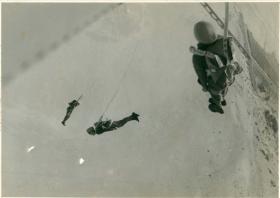
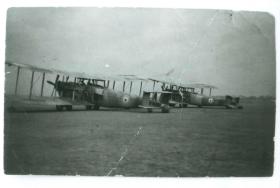
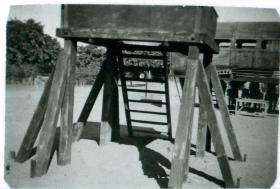
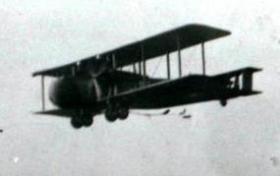
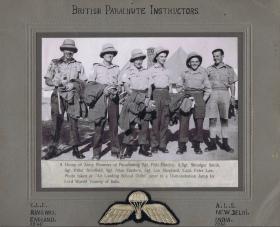
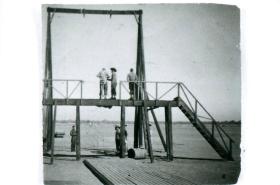
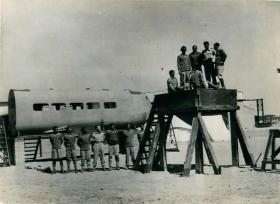

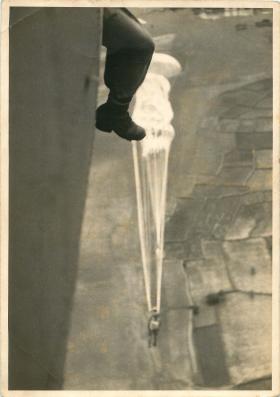
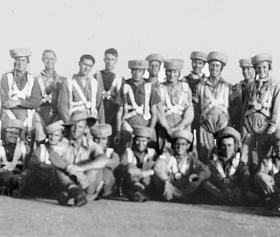
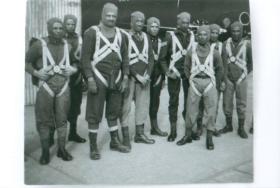
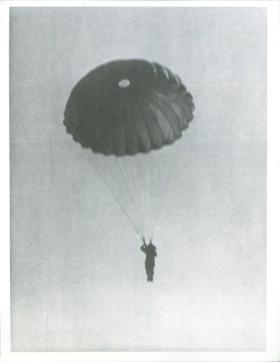
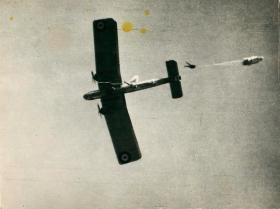
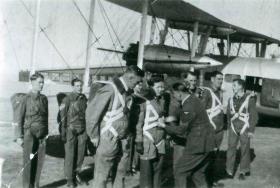
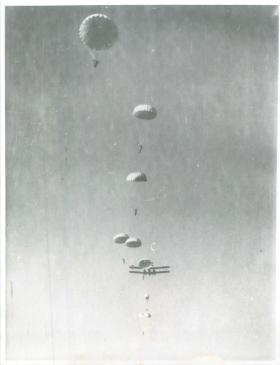
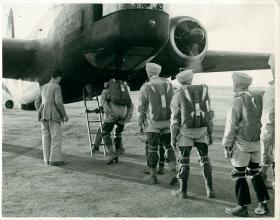
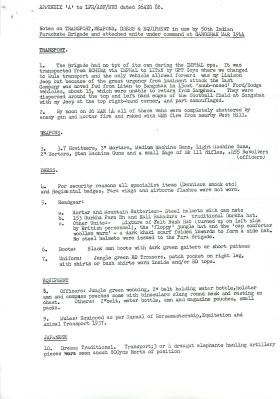
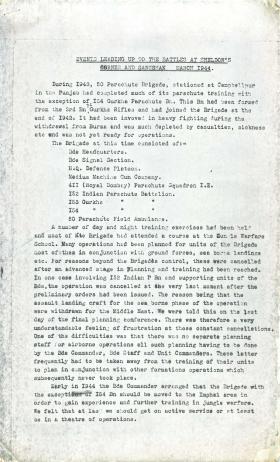
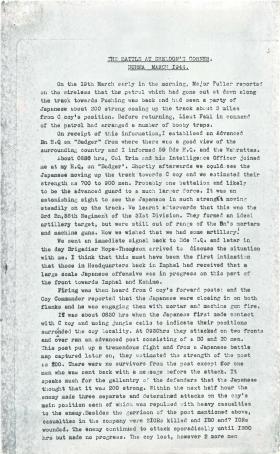
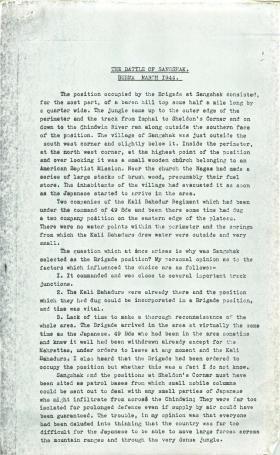
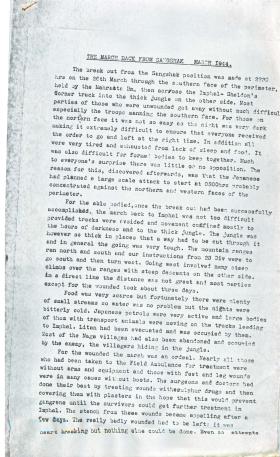
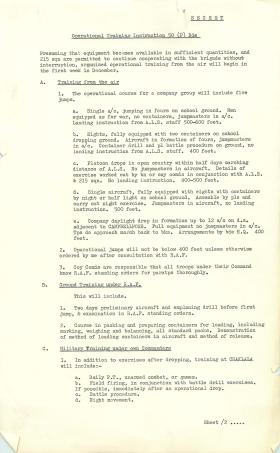
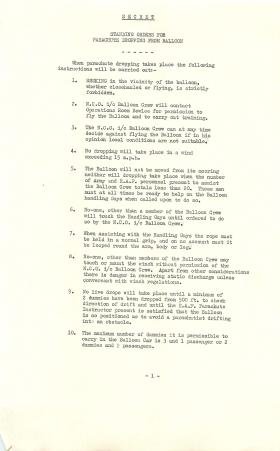
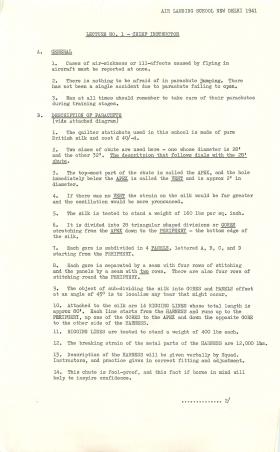
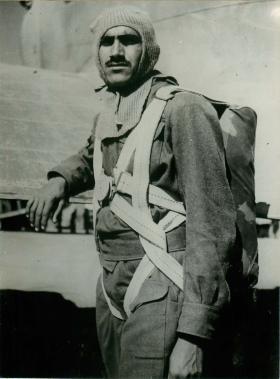
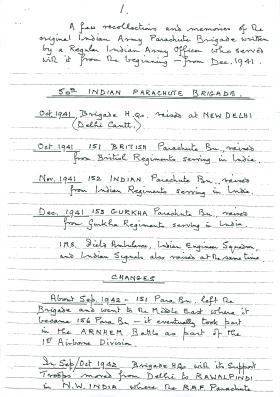
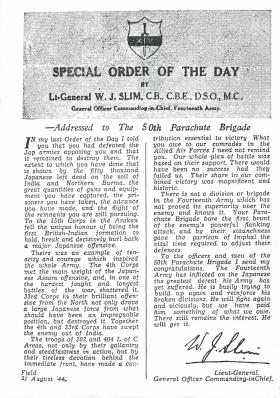
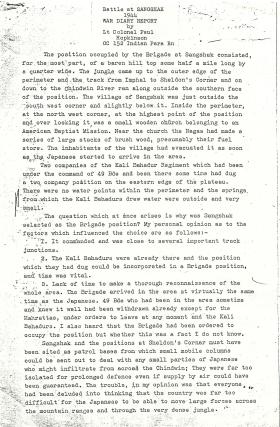

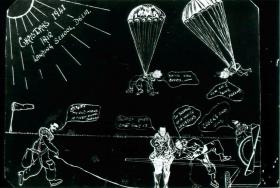
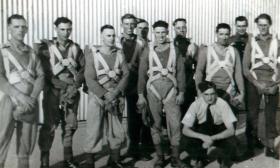
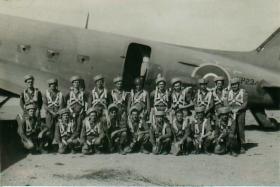
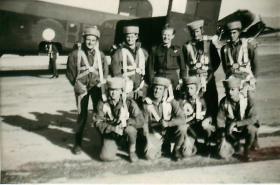




Latest Comments
At the time of my two week course, September 1945, all the flying was done with Dakotas, but earlier in 1945 Halifaxes were also in use. Another thing I remember is that by this time jumping from balloons had been discontinued. They said this was because of difficult air conditions. In this context, one report I heard from within the regiment was that in early 1945 someone had experienced the strange effect of an up-current which for a time carried his parachute upwards instead of downwards !
The only other snippet I have is that the RAF Sgt Instructor (seated cross-legged bottom left in the group photograph of trainees including members from 159 Regiment) said he had been despatching paratroops over Arnhem "this time last year".
Add Comment
In order to add comments you must be registered with ParaData.
If you are currently a ParaData member please login.
If you are not currently a ParaData member but wish to get involved please register.